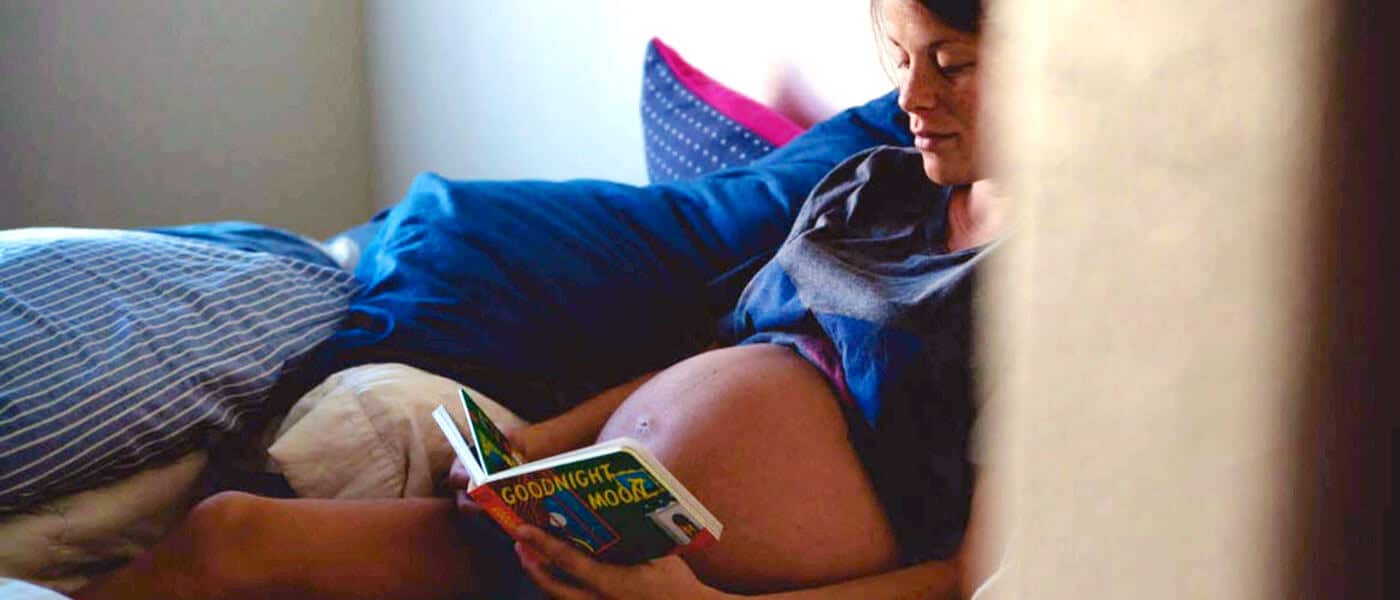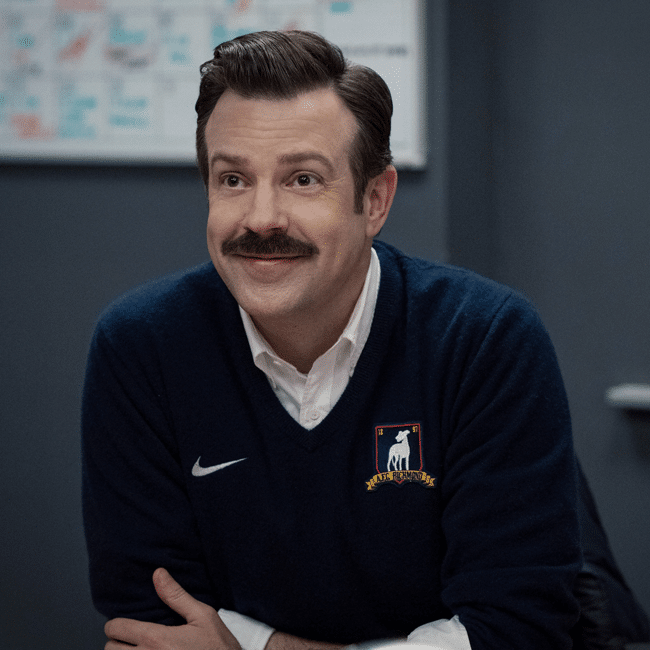Ethics Explainer: The Sunlight Test

Ethics Explainer: The Sunlight Test
ExplainerRelationships
BY Kym Middleton The Ethics Centre 8 SEP 2016
You can use the sunlight test by asking yourself, would I do the same thing if I knew my actions would end up on the front page of the newspaper tomorrow?
It’s an easy way to test an ethical decision before you act on it.
This test is most useful as a guard against moral temptations – where we stand to gain a great deal for doing something unethical. Moral temptations are strongest when the likelihood of punishment is low and what you stand to gain outweighs the ethical costs of doing the wrong thing.
Here’s a quick example
Say you have the chance to lie to your employer about a lunch you just took. It was meant to be with a client, but they cancelled at the last minute. You were already at the restaurant and ran into some friends and spent a couple of hours together.
If there’s not much chance of getting caught, do you tell your boss you were at a work lunch and charge the bill back to the company, or be honest and accept getting in a bit of trouble for taking an extended break?
This is a situation where the sunlight test can be really helpful. By taking the belief that we won’t get caught out of the equation, we’re able to determine whether our actions would stand up to public scrutiny.
It’s a really good way of ensuring we’re being motivated by what we think is good or right, and not by self-interest.
But what if I definitely won’t get caught?
The sunlight test is not actually about whether or not you’ll get busted. Often, it’s best used when it’s unlikely we’ll get caught doing the wrong thing. What we need to examine is whether a well informed but impartial third party would believe what we were doing is okay.
Although the sunlight test can be used by any person, it’s especially important for people whose professional roles put them in positions of public scrutiny – politicians, police, judges, journalists, and so on. For these people there is a real possibility their actions will end up on the front of the newspaper.
This means the sunlight test should be a daily part of their decision making.
However, even though there is a chance they’ll end up in the news, it’s still crucial public figures do what they believe is right. The sunlight test doesn’t ask us to imagine what the most popular course of action would be, but how our actions would be perceived by a reasonable and fair minded third party.
Ethics in your inbox.
Get the latest inspiration, intelligence, events & more.
By signing up you agree to our privacy policy
You might be interested in…
Opinion + Analysis
Relationships
Elf on the Shelf is a fun and festive way to teach your child to submit to the surveillance state
Explainer
Relationships
Ethics Explainer: Double-Effect Theory
Opinion + Analysis
Relationships, Society + Culture
Five dangerous ideas to ponder over the break
Opinion + Analysis
Relationships, Society + Culture
Meet Joseph, our new Fellow exploring society through pop culture
BY Kym Middleton
Former Head of Editorial & Events at TEC, Kym Middleton is a freelance writer, artistic producer, and multi award winning journalist with a background in long form TV, breaking news and digital documentary. Twitter @kymmidd
BY The Ethics Centre
The Ethics Centre is a not-for-profit organisation developing innovative programs, services and experiences, designed to bring ethics to the centre of professional and personal life.
Twitter made me do it!

Twitter made me do it!
Opinion + AnalysisHealth + WellbeingScience + Technology
BY Michael Salter The Ethics Centre 5 SEP 2016
In a recent panel discussion, academic and former journalist Emma Jane described what happened when she first included her email address at the end of her newspaper column in the late nineties.
Previously, she’d received ‘hate mail’ in the form of relatively polite and well-written letters but once her email address was public, there was a dramatic escalation in its frequency and severity. Jane coined the term ‘Rapeglish’ to describe the visceral rhetoric of threats, misogyny and sexual violence that characterises much of the online communication directed at women and girls.
Online misogyny and abuse has emerged as a major threat to the free and equal public participation of women in public debate – not just online, but in the media generally. Amanda Collinge, producer of the influential ABC panel show Q&A, revealed earlier this year that high profile women have declined to appear in the program due to “the well-founded fear that the online abuse and harassment they already suffer will increase”.
Twitter’s mechanics mean users have no control over who replies to their tweets and cannot remove abusive or defamatory responses.
Most explanations for online misogyny and prejudice tend to be cultural. We are told that the internet gives expression to or amplifies existing prejudice – showing us the way we always were. But this doesn’t explain why some online platforms have a greater problem with online abuse than others. If the internet were simply a mirror for the woes of society, we could expect to see similar levels of abuse across all online platforms.
The ‘honeypot for assholes’
This isn’t the case. Though it isn’t perfect, Facebook has a relatively low rate of online abuse compared to Twitter, which was recently described as a “honeypot for assholes”. One study found 88 percent of all discriminatory or hateful social media content originates on Twitter.
Twitter’s abuse problem illustrates how culture and technology are inextricably linked. In 2012, Tony Wang, then UK general manager of Twitter, described the organisation as “the free speech wing of the free speech party”. This reflects a libertarian commitment to uncensored information and rampant individualism, which has been a long-standing feature of computing and engineering culture – as revealed in the design and administration of Twitter.
Twitter’s mechanics mean users have no control over who replies to their tweets and cannot remove abusive or defamatory responses, which makes it an inherently combative medium. Users complaining of abuse have found that Twitter’s safety team does not view explicit threats of rape, death or blackmail as a violation of their terms of service.
The naïve notion that Twitter users should battle one another within a ‘marketplace of ideas’ . . . ignores the way sexism, racism and other forms of prejudice force diverse users to withdraw from the public sphere.
Twitter’s design and administration all reinforce the ‘if you can’t take the heat, get out of the kitchen’ machismo of Silicon Valley culture. Social media platforms were designed within a male dominated industry and replicate the assumptions and attitudes typical of men in the industry. Twitter provides users with few options to protect themselves from abuse and there are no effective bystander mechanisms to enable users to protect each other.
Over the years, the now banned Milo Yiannopoulos and now imprisoned ‘revenge porn king’ Hunter Moore have accumulated hundreds of thousands of admiring Twitter followers by orchestrating abuse and hate campaigns. The number of followers, likes and retweets can act like a scoreboard in the ‘game’ of abuse.
Suggesting Twitter should be a land of free speech where users should battle one another within a ‘marketplace of ideas’ might make sense to the white, male, heterosexual tech bro, but it ignores the way sexism, racism and other forms of prejudice force diverse users to withdraw from the public sphere.
Dealing with online abuse
Over the last few years, Twitter has acknowledged its problem with harassment and sought to implement a range of strategies. As Twitter CEO Dick Costolo stated to employees in a leaked internal memo, ‘We suck at dealing with abuse and trolls on the platform and we’ve sucked at it for years’. However, steps have been incremental at best and are yet to make any noticeable difference to users.
How do we challenge the most toxic aspects of internet culture when its norms and values are built into online platforms themselves?
Researchers and academics are calling for the enforcement of existing laws and the enactment of new laws in order to deter online abuse and sanction offenders. ‘Respectful relationships’ education programs are incorporating messages on online abuse in the hope of reducing and preventing it.
These necessary steps to combat sexism, racism and other forms of prejudice in offline society might struggle to reduce online abuse though. The internet is host to specific cultures and sub-cultured in which harassment is normal or even encouraged.
Libertarian machismo was entrenched online by the 1990s when the internet was dominated by young, white, tech-savvy men – some of whom disseminated an often deliberately vulgar and sexist communicative style that discouraged female participation. While social media has bought an influx of women and other users online it has not displaced these older, male-dominated subcultures.
The fact that harassment is so easy on social media is no coincidence. The various dot-com start-ups that produced social media have emerged out of computing cultures that have normalised online abuse for a long time. Indeed, it seems incitements to abuse have been technologically encoded into some platforms.
Designing a more equitable internet
So how do we challenge the most toxic aspects of internet culture when its norms and values are built into online platforms themselves? How can a fairer and more prosocial ethos be built into online infrastructure?
Changing the norms and values common online will require a cultural shift in computing industries and companies.
Earlier this year, software developer and commentator Randi Lee Harper drew up an influential list of design suggestions to ‘put out the Twitter trashfire’ and reduce the prevalence of abuse on the platform. Her list emphasises the need to give users greater control over their content and Twitter experience.
One solution might appear in the form of social media app Yik Yak – basically a local, anonymous version of Twitter but with a number of important built-in safety features. When users post content to Yik Yak, other users can ‘upvote’ or ‘downvote’ the content depending on how they feel about it. Comments that receive more than five ‘down’ votes are automatically deleted, enabling a swift bystander response to abusive content. Yik Yak also employs automatic filters and algorithms as a barrier against the posting of full names and other potentially inappropriate content.
Yik Yak’s platform design is underpinned by a social understanding of online communication. It recognises the potential for harm and attempts to foster healthy bystander practices and cultures. This is a far cry from the unfettered pursuit of individual free speech at all costs, which has allowed abuse and harassment to go unaddressed in the past.
It seems like it will require more than a behavioural shift from users. Changing the norms and values common online will require a cultural shift in computing industries and companies so the development of technology is underpinned by a more diverse and inclusive understanding of communication and users.
Ethics in your inbox.
Get the latest inspiration, intelligence, events & more.
By signing up you agree to our privacy policy
You might be interested in…
Opinion + Analysis
Health + Wellbeing, Society + Culture
The right to connect
Opinion + Analysis
Relationships, Science + Technology
Injecting artificial intelligence with human empathy
Opinion + Analysis
Science + Technology
On plagiarism, fairness and AI
Opinion + Analysis
Health + Wellbeing, Politics + Human Rights, Relationships
Ethics in a time of coronavirus
BY Michael Salter
Scientia Fellow and Associate Professor of Criminology UNSW. Board of Directors ISSTD. Specialises in complex trauma & organisedabuse.com
BY The Ethics Centre
The Ethics Centre is a not-for-profit organisation developing innovative programs, services and experiences, designed to bring ethics to the centre of professional and personal life.
LGBT...Z? The limits of ‘inclusiveness’ in the alphabet rainbow

LGBT…Z? The limits of ‘inclusiveness’ in the alphabet rainbow
Opinion + AnalysisHealth + WellbeingRelationships
BY Jesse Bering The Ethics Centre 5 SEP 2016
A few years ago on Twitter, I found myself mindlessly clicking on a breadcrumb trail of ‘likes’ linked to a random post. It was under these banal circumstances that I came across a user profile with a brief but purposeful bio, one featuring the mysterious acronym ‘LGBTZ’.
The first four letters were obvious enough to me. LGBT, that bite-sized abbreviation for Lesbian, Gay, Bisexual, Transgender, has become a nearly ubiquitous rallying call for members of these historically marginalised groups and their allies. Even Donald Trump spoke this family friendly shorthand in his convention speech (although his oddly staggered enunciation sounded like he was a nervous pre-schooler tip-toeing through an especially tricky part of the alphabet). Trump also tacked on a “Q” for all those ill-defined “Queers” in the Republican audience. (A far less common iteration of this initialism includes an “I” for “Intersex” and an “A” for “Asexual.”)
But Z? The Twitter user’s profile image was a horse, and other language alluding to the fact he (or she) was an animal lover – and not of the platonic kind – brought that curious Z into sharp, squirm-worthy focus: “Zoophile”.
Perhaps we should take a hard look in the mirror and ask whether excluding Zs and Ps and others from the current tolerance roster isn’t doing to them precisely what was once done to us.
If you’re not familiar with the term, a zoophile is a person who is primarily sexually attracted to animals. The primarily part of that sentence is key. These aren’t just lascivious farmhands shagging goats because they can’t find willing human partners. That’s just plain bestiality.
Rather, these are people who genuinely prefer animals over members of their own species. If you hook a male zoophile’s genitals up to a plethysmograph (an extremely sensitive measure of sexual arousal), these men display stronger erectile responses to, say, images of stallions or Golden Retrievers than they do to naked human models.
I’d written about scientific research into zoophilia, along with other unusual sexualities, in my book Perv, so it wasn’t shocking to learn zoophiles have a social media presence. What’s surprising is this maligned demographic is apparently becoming emboldened enough to pull its Z up to the acronym table.
Paedophiles have started inching their much-loathed “P” in this direction as well, albeit in veiled form with the contemporary label “MAP” (“Minor-Attracted Person”). This is especially true for the so-called virtuous paedophiles, who are seriously committed to refraining from acting on their sexual desires because they realise the harm they’d cause to children. Similarly, many zoophiles consider themselves gentle animal welfare advocates, denouncing “zoosadists” who sexually abuse animals.
In any event, it’s easy to shun the Zs and Ps and all the other unwanted sexual minorities clawing their way up the acceptance ladder, refusing them entry into our embattled LGBT territory, because we don’t want to be associated with “perverts”. We’ve overcome tremendous obstacles to be where we are today. As an American growing up during the homophobic Reagan era, never in a million years did I imagine I’d legally marry another man one day. Yet I did. At this stage, perhaps we should take a hard look in the mirror and ask whether excluding Zs and Ps and others from the current tolerance roster isn’t doing to them precisely what was once done to us.
I know what you’re thinking. There’s a huge difference, since in these sad cases we’re dealing with the most innocent, most vulnerable members of society, who also can’t give their consent. That’s very much true.
When you actually try to justify our elbowing the Zs and Ps and others of their ilk out from under the rainbow umbrella though, it’s not so straightforward. Any seemingly ironclad rationale for their exclusion is stuffed more with blind emotion than clear-sighted reason.
To begin with, one doesn’t have to be sexually active to be a member of a sexual community. After all, I identified as gay before I had gay sex, just as I imagine most heterosexual people identify as straight before losing their virginity. In principle, at least, the same would apply to morally celibate zoophiles and paedophiles, neither of which are criminals and child molesters. Desires and behaviours are two different things.
Secondly, there’s now strong evidence paraphilias (lust outside of the norm) emerge in early childhood or, in the case of paedophilia, may even be innate. One zoophile, a successful attorney, told researchers that while his friends in middle school were all trying to get their hands on their fathers’ Playboys, he was secretly coveting the latest issue of Equus magazine.
Whether Zs or Ps are “born that way” or become that way early in life, it’s certainly not a choice they’ve made. This isn’t difficult to grasp but it tends to elude popular wisdom. I don’t know about you but I couldn’t become aroused by a Clydesdale or a prepubescent child if my life depended on it. That doesn’t make me morally superior to those unlucky enough to have brains that through no fault of their own respond this way to animals and children.
It’s an uncomfortable conversation to have, but there’s no science or logic to why “LGBT” contains the particular letters it does.
Not so long ago, remember, the majority of society saw gay men like me as immoral – even evil. Not for anything they’d done but for the simple fact that, neurologically, they fancied other men rather than women. The courts would have declared me mentally ill, not happily married. Just like conversion therapy has failed miserably to turn gay people straight, paraphilias are also immutable. Every clinical attempt to turn paedophiles into “teleiophiles” (attracted to reproductive-aged adults) has been a major flop.
Who knows what tortuous inner lives all those closeted Zs and Ps – and other unmentionables bearing today’s cross of scorn – experience, despite being celibate. Clinical psychologists report many of their clients are suicidal because of unwanted sexual desires – and this includes teenagers with a dawning awareness they are attracted to younger people.
I think it’s patently hypocritical for the LGBT community – which has worked so hard to overcome negative stereotypes, ostracism, and unjust laws – to shut out these people, fearing they would tarnish us more acceptable deviants. We’re only paying lip service to the concept of inclusiveness when we so publicly distance ourselves from those who need this communal protection the most.
In fact, LGB people arguably share more in common with the Zs and Ps than they do the Ts, since being transgender isn’t about who (or what) you’re sexually attracted to, but the gender you identify with. Unlike those representing the other letters in this character soup, trans people say their sexuality plays no role at all. Why then are Ts included while other, more unspeakable, sexual minorities aren’t?
Here’s my point then. It’s an uncomfortable conversation to have but there’s no science or logic to why “LGBT” contains the particular letters it does. Instead, it’s an evolving social code. So, is the filter that shapes this code just another moralistic lens that casts some human beings as inherently inferior and worthier of shame than others? And if this is so, who gets to control this filter and why?
Ethics in your inbox.
Get the latest inspiration, intelligence, events & more.
By signing up you agree to our privacy policy
You might be interested in…
Opinion + Analysis
Business + Leadership, Relationships, Science + Technology
Are we ready for the world to come?
Opinion + Analysis
Politics + Human Rights, Relationships
Why we should be teaching our kids to protest
Explainer
Relationships
Ethics Explainer: Ad Hominem Fallacy
Opinion + Analysis
Relationships, Society + Culture
Beyond cynicism: The deeper ethical message of Ted Lasso
BY Jesse Bering
Jesse Bering is a research psychologist and Director of the Centre for Science Communication at the University of Otago in Dunedin, New Zealand. An award-winning science writer specializing in human behaviour, his first book, The Belief Instinct (2011), was included on the American Library Association’s Top 25 Books of the Year.
BY The Ethics Centre
The Ethics Centre is a not-for-profit organisation developing innovative programs, services and experiences, designed to bring ethics to the centre of professional and personal life.
Ethics Explainer: Social Contract

Social contract theories see the relationship of power between state and citizen as a consensual exchange. It is legitimate only if given freely to the state by its citizens and explains why the state has duties to its citizens and vice versa.
Although the idea of a social contract goes as far back as Epicurus and Socrates, it gained popularity during The Enlightenment thanks to Thomas Hobbes, John Locke and Jean-Jacques Rousseau. Today the most popular example of social contract theory comes from John Rawls.
The social contract begins with the idea of a state of nature – the way human beings would exist in the world if they weren’t part of a society. Philosopher Thomas Hobbes believed that because people are fundamentally selfish, life in the state of nature would be “nasty, brutish and short”. The powerful would impose their will on the weak and nobody could feel certain their natural rights to life and freedom would be respected.
Hobbes believed no person in the state of nature was so strong they could be free from fear of another person and no person was so weak they could not present a threat. Because of this, he suggested it would make sense for everyone to submit to a common set of rules and surrender some of their rights to create an all-powerful state that could guarantee and protect every person’s right. Hobbes called it the ‘Leviathan’.
It’s called a contract because it involves an exchange of services. Citizens surrender some of their personal power and liberty. In return the state provides security and the guarantee that civil liberty will be protected.
Crucially, social contract theorists insist the entire legitimacy of a government is based in the reciprocal social contract. They are legitimate because they are the only ones the people willingly hand power to. Locke called this popular sovereignty.
Unlike Hobbes, Locke thought the focus on consent and individual rights meant if a group of people didn’t agree with significant decisions of a ruling government then they should be allowed to join together to form a different social contract and create a different government.
Not every social contract theorist agrees on this point. Philosophers have different ideas on whether the social contract is real, or if it’s a fictional way to describe the relationship between citizens and their government.
If the social contract is a real contract – just like your employment contract – people could be free not to accept the terms. If a person didn’t agree they should give some of their income to the state they should be able to decline to pay tax and as a result, opt out of state-funded hospitals, education, and all the rest.
Like other contracts, withdrawing comes with penalties – so citizens who decide to stop paying taxes may still be subject to punishment.
Other problems arise when the social contract is looked at through a feminist perspective. Historically, social contract theories, like the ones proposed by Hobbes and Locke, say that (legitimate) state authority comes from the consent of free and equal citizens.
Philosophers like Carole Pateman challenge this idea by noting that it fails to deal with the foundation of male domination that these theories rest on.
For Pateman the myth of autonomous, free and equal individual citizens is just that: a myth. It obscures the reality of the systemic subordination of women and others.
In Pateman’s words the social contract is first and foremost a ‘sexual contract’ that keeps women in a subordinate role. The structural subordination of women that props up the classic social contract theory is inherently unjust.
The inherent injustice of social contract theory is further highlighted by those critics that believe individual citizens are forced to opt in to the social contract. Instead of being given a choice, they are just lumped together in a political system which they, as individuals, have little chance to control.
Of course, the idea of individuals choosing not to opt in or out is pretty impractical – imagine trying to stop someone from using roads or footpaths because they didn’t pay tax.
To address the inherent inequity in some forms of social contract theory, John Rawls proposes a hypothetical social contract based on fundamental principles of justice. The principles are designed to provide a clear rationale to guide people in choosing to willingly agree to surrender some individual freedoms in exchange for having some rights protected. Rawls’ answer to this question is a thought experiment he calls the veil of ignorance.
By imagining we are behind a veil of ignorance with no knowledge of our own personal circumstances, we can better judge what is fair for all. If we do so with a principle in place that would strive for liberty for all at no one else’s expense, along with a principle of difference (the difference principle) that guarantees equal opportunity for all, as a society we would have a more just foundation for individuals to agree to a contract that in which some liberties would be willingly foregone.
Out of Rawls’ focus on fairness within social contract theory comes more feminist approaches, like that of Jean Hampton. In addition to criticising Hobbes’ theory, Hampton offers another feminist perspective that focuses on extending the effects of the social contract to interpersonal relationships.
In established states, it can be easy to forget the social contract involves the provision of protection in exchange for us surrendering some freedoms. People can grow accustomed to having their rights protected and forget about the liberty they are required to surrender in exchange.
Whether you think the contract is real or just a useful metaphor, social contract theory offers many unique insights into the way citizens interact with government and each other.
Ethics in your inbox.
Get the latest inspiration, intelligence, events & more.
By signing up you agree to our privacy policy
You might be interested in…
Opinion + Analysis
Health + Wellbeing, Politics + Human Rights
3 Questions, 2 jabs, 1 Millennial
Opinion + Analysis
Health + Wellbeing, Politics + Human Rights, Relationships
There’s more than lives at stake in managing this pandemic
Opinion + Analysis
Politics + Human Rights, Relationships
Adoption without parental consent: kidnapping or putting children first?
Opinion + Analysis
Business + Leadership, Politics + Human Rights, Relationships
It’s time to increase racial literacy within our organisations
BY The Ethics Centre
The Ethics Centre is a not-for-profit organisation developing innovative programs, services and experiences, designed to bring ethics to the centre of professional and personal life.
Why hard conversations matter

Why hard conversations matter
Opinion + AnalysisRelationships
BY Simon Longstaff The Ethics Centre 31 AUG 2016
There are times in the history of a nation when its character is tested and defined. Too often it happens with war, natural disasters or economic collapse. Then the shouting gets our attention.
But there are also our quieter moments – the ones that reveal solid truths about who we are and what we stand for.
How should we recognise Indigenous Australians? Can our economy be repaired in a manner that is even-handed? How will we choose if forced to decide between China and the United States? How do we create safe ways for people seeking asylum? Can we grow our economy and protect our people and environments? These are just some of the questions we face.
Too often, I see conversations shut down before they have even begun. People with a contrary point of view are faced with outrage, shouted down or silenced by others driven by the certainty of righteous indignation.
And here’s another question. Do we have the capacity to talk about these things without tearing ourselves and each other apart?
There are some safe places for open conversation about difficult questions. Thirty years ago I began work at a not-for-profit, The Ethics Centre dedicated to creating them. The Festival of Dangerous Ideas now enters its 11th year with a new digital format to cater to our current times, bringing leading thinkers from around the world together to discuss important issues.
Sadly, there is a growing fragility across Australian society. The demand for ideological purity (you’re completely ‘with us’ or ‘against us’) puts us at risk of a fractured and stuffy world of absolutes.
Too often, I see conversations shut down before they have even begun. People with a contrary point of view are faced with outrage, shouted down or silenced by others driven by the certainty of righteous indignation. In such a world, there is no nuance, no seeking to understand the grey areas or subtleties of argument.
Attempts to prove to people that they are wrong just leads to stalemate. Barricades go up and each side lobs verbal grenades. There is another way.
This phenomenon crosses the political spectrum – embracing conservatives and progressives alike. In my opinion, it is the product of a self-fulfilling fear that our society’s ethical skin is too thin to survive the prick of controversy and debate. This is a poisonous belief that drains the life from a liberal democracy.
Fortunately, the antidote is easily at hand. In essence we need to spend less time trying to change other people’s minds and more time trying to understand their point of view. We do that by taking them entirely seriously.
Why make this change? Because attempts to prove to people that they are wrong just leads to stalemate. Barricades go up and each side lobs verbal grenades. There is another way. We could allow people to work out what the boundaries are for their own beliefs.
Working out the lines we cannot cross is often the first step towards others, but it can only happen when people feel safe. Giving people the space to fall on just the right side of such lines can make a world of difference.
So I wonder, might we pause for a moment, climb down from our battle stations and call a ceasefire in the wars of ideas? Might we recognise the person on the other side of an issue may not be unprincipled? Perhaps they’re just differently principled.
Can we see in the face of our ideological opponent another person of goodwill? What then might we discover about each other; what unites and, yes, what divides? What then might we understand about the issues that will define us as a people?
Let’s rediscover the art of difficult discussions in which success is measured in the combination of passion and respect. Let’s banish the bullies – even those who claim to be well-intentioned. They, alone, have no place in the conversations we now need to have.
Ethics in your inbox.
Get the latest inspiration, intelligence, events & more.
By signing up you agree to our privacy policy
You might be interested in…
Opinion + Analysis
Relationships
How to help your kid flex their ethical muscle
Opinion + Analysis
Health + Wellbeing, Relationships
Anthem outrage reveals Australia’s spiritual shortcomings
Opinion + Analysis
Business + Leadership, Relationships
It’s time to take citizenship seriously again
Big thinker
Relationships
Big Thinker: Friedrich Nietzsche
BY Simon Longstaff
Simon Longstaff began his working life on Groote Eylandt in the Northern Territory of Australia. He is proud of his kinship ties to the Anindilyakwa people. After a period studying law in Sydney and teaching in Tasmania, he pursued postgraduate studies as a Member of Magdalene College, Cambridge. In 1991, Simon commenced his work as the first Executive Director of The Ethics Centre. In 2013, he was made an officer of the Order of Australia (AO) for “distinguished service to the community through the promotion of ethical standards in governance and business, to improving corporate responsibility, and to philosophy.” Simon is an Adjunct Professor of the Australian Graduate School of Management at UNSW, a Fellow of CPA Australia, the Royal Society of NSW and the Australian Risk Policy Institute.
BY The Ethics Centre
The Ethics Centre is a not-for-profit organisation developing innovative programs, services and experiences, designed to bring ethics to the centre of professional and personal life.
Ethics Explainer: Eudaimonia

The closest English word for the Ancient Greek term eudaimonia is probably “flourishing”.
The philosopher Aristotle used it as a broad concept to describe the highest good humans could strive toward – or a life ‘well lived’.
Though scholars translated eudaimonia as ‘happiness’ for many years, there are clear differences. For Aristotle, eudaimonia was achieved through living virtuously – or what you might describe as being good. This doesn’t guarantee ‘happiness’ in the modern sense of the word. In fact, it might mean doing something that makes us unhappy, like telling an upsetting truth to a friend.
Virtue is moral excellence. In practice, it is to allow something to act in harmony with its purpose. As an example, let’s take a virtuous carpenter. In their trade, virtue would be excellences in artistic eye, steady hand, patience, creativity, and so on.
The eudaimon [yu-day-mon] carpenter is one who possesses and practices the virtues of his trade.
By extension, the eudaimon life is one dedicated to developing the excellences of being human. For Aristotle, this meant practicing virtues like courage, wisdom, good humour, moderation, kindness, and more.
Today, when we think about a flourishing person, virtue doesn’t always spring to mind. Instead, we think about someone who is relatively successful, healthy, and with access to a range of the good things in life. We tend to think flourishing equals good qualities plus good fortune.
This isn’t far from what Aristotle himself thought. Although he did believe the virtuous life was the eudaimon life, he argued our ability to practice the virtues was dependent on other things falling in our favour.
For instance, Aristotle thought philosophical contemplation was an intellectual virtue – but to have the time necessary for contemplation you would need to be wealthy. Wealth (as we all know) is not always a product of virtue.
Some of Aristotle’s conclusions seem distasteful by today’s standards. He believed ugliness was a hindrance to developing practical social virtues like friendship (because nobody would be friends with an ugly person).
However, there is something intuitive in the observation that the same person, transformed into the embodiment of social standards of beauty, would – everything else being equal – have more opportunities available to them.
In recognising our ability to practice virtue might be somewhat outside our control, Aristotle acknowledges our flourishing is vulnerable to misfortune. The things that happen to us can not only hurt us temporarily, but they can put us in a condition where our flourishing – the highest possible good we can achieve – is irrevocably damaged.
For ethics, this is important for three reasons.
First, because when we’re thinking about the consequences of an action we should take into account their impact on the flourishing of others. Second, it suggests we should do our best to eliminate as many barriers to flourishing as we possibly can. And thirdly, it reminds us that living virtuously needs to be its own reward. It is no guarantee of success, happiness or flourishing – but it is still a central part of what gives our lives meaning.
Ethics in your inbox.
Get the latest inspiration, intelligence, events & more.
By signing up you agree to our privacy policy
You might be interested in…
Big thinker
Relationships
Big Thinker: Immanuel Kant
Opinion + Analysis
Relationships, Society + Culture
I’d like to talk to you: ‘The Rehearsal’ and the impossibility of planning for the right thing
Explainer
Relationships
Ethics Explainer: Ethics
Opinion + Analysis
Politics + Human Rights, Health + Wellbeing, Society + Culture
I changed my mind about prisons
BY The Ethics Centre
The Ethics Centre is a not-for-profit organisation developing innovative programs, services and experiences, designed to bring ethics to the centre of professional and personal life.
Don’t throw the birth plan out with the birth water!

Don’t throw the birth plan out with the birth water!
Opinion + AnalysisHealth + WellbeingPolitics + Human Rights
BY Hannah Dahlen The Ethics Centre 2 AUG 2016
Just try mentioning ‘birth plans’ at a party and see what happens. Hannah Dahlen – a midwife’s perspective
Mia Freedman once wrote about a woman who asked what her plan was for her placenta. Freedman felt birth plans were “most useful when you set them on fire and use them to toast marshmallows”. She labelled people who make these plans as “birthzillas” more interested in birth than having a baby.
In response, Tara Moss argued:
The majority of Australian women choose to birth in hospital and all hospitals do not have the same protocols. It is easy to imagine they would, but they don’t, not from state to state and not even from hospital to hospital in the same city. Even individual health practitioners in the same facility sometimes do not follow the same protocols.
The debate
Why the controversy over a woman and her partner writing down what they would like to have done or not done during their birth? The debate seems not to be about the birth plan itself, but the issue of women taking control and ownership of their births and what happens to their bodies.
Some oppose birth plans on the basis that all experts should be trusted to have the best interests of both mother and baby in mind at all times. Others trust the mother as the person most concerned for her baby and believe women have the right to determine what happens to their bodies during this intimate, individual, and significant life event.
As a midwife of some 26 years, I wish we didn’t need birth plans. I wish our maternity system provided women with continuity of care so by the time a woman gave birth her care provider would fully know and support her well-informed wishes. Unfortunately, most women do not have access to continuity of care. They deal with shift changes, colliding philosophical frameworks, busy maternity units, and varying levels of skill and commitment from staff.
There are so many examples of interventions that are routine in maternity care but lack evidence they are necessary or are outright harmful. These include immediate clamping and cutting of the umbilical cord at birth, episiotomy, continuous electronic foetal monitoring, labouring or giving birth laying down and unnecessary caesareans. Other deeply personal choices such as the use of immersion in water for labour and birth or having a natural birth of the placenta are often not presented as options, or are refused when requested.
The birth plan is a chance to raise and discuss your wishes with your healthcare provider. It provides insight into areas of further conversation before labour begins.
I once had a woman make three birth plans when she found out her baby was in a breech presentation at 36 weeks. One for a vaginal breech birth, one for a cesarean, and one for a normal birth if the baby turned. The baby turned and the first two plans were ditched. But she had been through each scenario and carved out what was important for her.
Bashi Hazard – a legal perspective
Birth plans were introduced in the 1980s by childbirth educators to help women shape their preferences in labour and to communicate with their care providers. Women say preparing birth plans increases their knowledge and ability to make informed choices, empowers them, and promotes their sense of safety during childbirth. Some (including in Australia) report that their carefully laid plans are dismissed, overlooked, or ignored.
There appears to be some confusion about the legal status or standing of birth plans. Neither is reflective of international human rights principles or domestic law. The right to informed consent is a fundamental principle of medical ethics and human rights law and is particularly relevant to the provision of medical treatment. In addition, our common law starts from the premise that every human body is inviolate and cannot be subject to medical treatment without autonomous, informed consent.
Pregnant women are no exception to this human rights principle nor to the common law.
If you start from this legal and human rights premise, the authoritative status of a birth plan is very clear. It is the closest expression of informed consent that a woman can offer her caregiver prior to commencing labour. This is not to say she cannot change her mind but it is the premise from which treatment during labour or birth should begin.
Once you accept that a woman has the right to stipulate the terms of her treatment, the focus turns to any hostility and pushback from care providers to the preferences a woman has the right to assert in relation to her care.
Mothers report their birth plans are criticised or outright rejected on the basis that birth is “unpredictable”. There is no logic in this.
Care providers who understand the significance of the human and legal right to informed consent begin discussing a woman’s options in labour and birth with her as early as the first antenatal visit. These discussions are used to advise, inform, and obtain an understanding of the woman’s preferences in the event of various contingencies. They build the trust needed to allow the care provider to safely and respectfully support the woman through pregnancy and childbirth. Such discussions are the cornerstone of woman-centred maternity healthcare.
Human Rights in Childbirth
Reports received by Human Rights in Childbirth indicate that care provider pushback and hostility towards birth plans occurs most in facilities with fragmented care or where policies are elevated over women’s individual needs. Mothers report their birth plans are criticised or outright rejected on the basis that birth is “unpredictable”. There is no logic in this. If anything, greater planning would facilitate smoother outcomes in the event of unanticipated eventualities.
In truth, it is not the case that these care providers don’t have a birth plan. There is a birth plan – one driven purely by care providers and hospital protocols without discussion with the woman. This offends the legal and human rights of the woman concerned and has been identified as a systemic form of abuse and disrespect in childbirth, and as a subset of violence against women.
It is essential that women discuss and develop a birth plan with their care providers from the very first appointment. This is a precious opportunity to ascertain your care provider’s commitment to recognising and supporting your individual and diverse needs.
Gauge your care provider’s attitude to your questions as well as their responses. Expect to repeat those discussions until you are confident that your preferences will be supported. Be wary of care providers who are dismissive, vague or non-responsive. Most importantly, switch care providers if you have any concerns. The law is on your side. Use it.
Making a birth plan – some practical tips
- Talk it through with your lead care provider. They can discuss your plans and make sure you understand the implications of your choices.
- Make sure your support network know your plan so they can communicate your wishes.
- Attending antenatal classes will help you feel more informed. You’ll discover what is available and the evidence is behind your different options.
- Talk to other women about what has worked well for them, but remember your needs might be different.
- Remember you can change your mind at any point in the labour and birth. What you say is final, regardless of what the plan says.
- Try not to be adversarial in your language – you want people working with you, not against you. End the plan with something like “Thank you so much for helping make our birth special”.
- Stick to the important stuff.
Some tips on the specific content of your birth plan are available here.
Ethics in your inbox.
Get the latest inspiration, intelligence, events & more.
By signing up you agree to our privacy policy
You might be interested in…
Big thinker
Politics + Human Rights
Big Thinker: Peter Singer
Opinion + Analysis
Health + Wellbeing, Relationships
Is it ok to visit someone in need during COVID-19?
Opinion + Analysis
Politics + Human Rights, Society + Culture
Respect for persons lost in proposed legislation
Opinion + Analysis
Politics + Human Rights
Power without restraint: juvenile justice in the Northern Territory
BY Hannah Dahlen
Hannah Dahlen is a professor of Midwifery at Western Sydney University and a practising midwife.
BY The Ethics Centre
The Ethics Centre is a not-for-profit organisation developing innovative programs, services and experiences, designed to bring ethics to the centre of professional and personal life.
The “good enough” ethical setting for self-driving cars

The “good enough” ethical setting for self-driving cars
Opinion + AnalysisScience + Technology
BY Ryan Jenkins The Ethics Centre 19 JUL 2016
Plenty of electronic ink has been spilled over the benefits self-driving cars offer. We have good reason to believe they could greatly reduce the number of fatalities from car accidents – studies suggest upwards of 90 percent of road accidents are caused by driver error.
Avoiding a crash altogether is clearly the best option, but even in crash scenarios some believe autonomous cars might be preferable. Facing a “no win” situation, a driverless car may have the opportunity to “optimise” the crash by minimising harm to those involved. However, choices about how to direct or distribute harm in these cases (for example, hit that person instead of the other) are ethically fraught and demand extraordinary scrutiny of a number of distinctly philosophical issues.
Can we be punished for inaction?
It would be unfair to expect car manufacturers to program their products to ‘crash ethically’ when the outcomes might get them in legal trouble. The law typically errs on the side of not directly committing harm. This means there might be difficulties in developing algorithms that simply minimise harm.
Given this, the law might condemn an autonomous car that steered away from five people and into one person in order to minimise the harm resulting from an accident. A judge might argue that the car steered into someone and so it did harm. The alternative, merely running over five people, results in more harm, but at least the car did not aim at any one of them.
But is inaction in this case morally justified if it leads to more harm? Philosophers have long disputed this distinction between doing harm and merely allowing harm to occur. It is the basis for perhaps the most famous philosophical thought experiment – the trolley problem.
Some philosophers argue that we can still be held responsible for inaction because not doing something still involves making a decision. For example, a doctor may kill her patient by withholding treatment, or a diplomat may offend a foreign dignitary by not shaking her hand. If algorithms that minimise harm are problematic because of a legal preference for inaction over the active causing of harm, there might be reason to ask the law to change.
Should we always try to minimise harm?
Even if we were to assume autonomous cars should minimise the total amount of harm that comes about from an accident, there are complex issues to resolve. Should cars try to minimise the total number of people harmed? Or minimise the kinds of harms that come about?
For example, if a car must choose between hitting one person head-on (a high risk accident) and steering off the road, endangering several others to a less serious injury, which is preferable? Moral philosophers will disagree about which of these options is better.
Another complication arises when we consider that harm minimisation might require an autonomous car to allow its own passengers to be injured or even killed in cases where inaction wouldn’t have brought them to harm. Few consumers would buy a car they expected to behave this way, even if they would prefer everyone else’s car did.
Are people breaking the law more deserving of harm?
Minimising overall harm might in some cases lead to consequences many would find absurd. Imagine a driver who decided to play ‘chicken’ with an autonomous car – driving on the wrong side of the road and threatening to plough head-long into it. Should the passengers in the autonomous car be put at risk to try to avoid a crash that is only occurring because the other driving is breaking the law?
Perhaps self-driving cars need something like ‘legality-adjusted aggregate harm minimisation’ algorithms. Given the widely-held beliefs that people breaking the law are liable to greater harm, deserve a greater share of any harm and that it would be unjust to require law-abiding citizens to share in the harm equally, self-driving cars will need to reflect these values if they are to be commercially viable.
But this approach also faces problems. Engineers would need a reliable way to predict crash trajectories in a way that provided information about the severity of harms, which they aren’t yet able to do. Philosophers would also need a reliable way to assign weighted values to harms, for example, by assigning values to minor versus major injuries. And as a society we would need to determine how liable to harm someone becomes by breaking the law. For example, someone exceeding the speed limit by a small amount may not be as liable to harm as someone playing ‘chicken’.
None of these issues are easy and seeking sure-fire answers every stakeholder agrees to is likely impossible. Instead, perhaps we should seek overlapping consensus – narrowing down the domain of possible algorithms to those that are technically feasible, morally justified and legally defensible. Every proposal for autonomous car ethics is likely to generate some counterintuitive verdicts but ongoing engagement between various parties should continue in the hopes of finding a set of all-around acceptable algorithms.
Ethics in your inbox.
Get the latest inspiration, intelligence, events & more.
By signing up you agree to our privacy policy
You might be interested in…
Opinion + Analysis
Science + Technology, Business + Leadership
The ethics of AI’s untaxed future
Opinion + Analysis
Business + Leadership, Politics + Human Rights, Science + Technology
Not too late: regaining control of your data
Big thinker
Politics + Human Rights, Science + Technology
Big Thinker: Francesca Minerva
Opinion + Analysis
Science + Technology
Why ethics matters for autonomous cars
BY Ryan Jenkins
Dr Ryan Jenkins studies the moral dimensions of technologies with the potential to profoundly impact human life. He is an assistant professor of philosophy and a Senior Fellow at the Ethics & Emerging Sciences Group at California Polytechnic State University, San Luis Obispo. His interests include the ethics of transformative technologies such as driverless cars, robots, algorithms, and autonomous weapons. He is concerned with how these technologies intersect with duties of justice, how they stand to restructure our activities, and how they enable or encumber meaningful human lives.
BY The Ethics Centre
The Ethics Centre is a not-for-profit organisation developing innovative programs, services and experiences, designed to bring ethics to the centre of professional and personal life.
Ethics Explainer: Just War Theory

Just war theory is an ethical framework used to determine when it is permissible to go to war. It originated with Catholic moral theologians like Augustine of Hippo and Thomas Aquinas, though it has had a variety of different forms over time.
Today, just war theory is divided into three categories, each with its own set of ethical principles. The categories are jus ad bellum, jus in bello, and jus post bellum. These Latin terms translate roughly as ‘justice towards war’, ‘justice in war’, and ‘justice after war’.
Jus ad bellum
When political leaders are trying to decide whether to go to war or not, just war theory requires them to test their decision by applying several principles:
- Is it for a just cause?
This requires war only be used in response to serious wrongs. The most common example of just cause is self-defence, though coming to the defence of another innocent nation is also seen as a just cause by many (and perhaps the highest cause).
- Is it with the right intention?
This requires that war-time political leaders be solely motivated, at a personal level, by reasons that make a war just. For example, even if war is waged in defence of another innocent country, leaders cannot resort to war because it will assist their re-election campaign.
- Is it from a legitimate authority?
This demands war only be declared by leaders of a recognised political community and with the political requirements of that community.
- Does it have due proportionality?
This requires us to imagine what the world would look like if we either did or didn’t go to war. For a war to be ‘just’ the quality of the peace resulting from war needs to superior to what would have happened if no war had been fought. This also requires we have some probability of success in going to war – otherwise people will suffer and die needlessly.
- Is it the last resort?
This says we should explore all other reasonable options before going to war – negotiation, diplomacy, economic sanctions and so on.
Even if the principles of jus ad bellum are met, there are still ways a war can be unjust.
Jus in bello
These are the ethical principles that govern the way combatants conduct themselves in the ‘theatre of war’.
- Discrimination requires combatants only to attack legitimate targets. Civilians, medics and aid workers, for example, cannot be the deliberate targets of military attack. However, according the principle of double-effect, military attacks that kill some civilians as a side-effect may be permissible if they are both necessary and proportionate.
- Proportionality applies to both jus ad bellum and jus in bello. Jus in bello requires that in a particular operation, combatants do not use force or cause harm that exceeds strategic or ethical benefits. The general idea is that you should use the minimum amount of force necessary to achieve legitimate military aims and objectives.
- No intrinsically unethical means is a debated principle in just war theory. Some theorists believe there are actions which are always unjustified, whether or not they are used against enemy combatants or are proportionate to our goals. Torture, shooting to maim and biological weapons are commonly-used examples.
- ‘Following orders’ is not a defence as the war crime tribunals after the Second World War clearly established. Military personnel may not be legally or ethically excused for following illegal or unethical orders. Every person bearing arms is responsible for their conduct – not just their commanders.
Jus post bello
Once a war is completed, steps are necessary to transition from a state of war to a state of peace. Jus post bello is a new area of just war theory aimed at identifying principles for this period. Some of the principles that have been suggested (though there isn’t much consensus yet) are:
- Status quo ante bellum, a Latin term meaning ‘the way things were before war’ – basically rights, property and borders should be restored to how they were before war broke out. Some suggest this is a problem because those can be the exact conditions which led to war in the first place.
- Punishment for war crimes is a crucial step to re-installing a just system of governance. From political leaders down to combatants, any serious offences on either side of the conflict need to be brought to justice.
- Compensation of victims suggests that, as much as possible, the innocent victims of conflict be compensated for their losses (though some of the harms of war will be almost impossible to adequately compensate, such as the loss of family members).
- Peace treaties need to be fair and just to all parties, including those who are guilty for the war occurring.
Just war theory provides the basis for exercising ‘ethical restraint’ in war. Without restraint, philosopher Michael Ignatieff, argues there is no way to tell the difference between a ‘warrior’ and a ‘barbarian’.
Ethics in your inbox.
Get the latest inspiration, intelligence, events & more.
By signing up you agree to our privacy policy
You might be interested in…
Opinion + Analysis
Business + Leadership, Politics + Human Rights
Australia is no longer a human rights leader
Big thinker
Politics + Human Rights, Relationships
Big Thinker: Germaine Greer
Opinion + Analysis
Business + Leadership, Politics + Human Rights
Democracy is still the least-worst option we have
Opinion + Analysis
Politics + Human Rights, Relationships
Whose home, and who’s home?
BY The Ethics Centre
The Ethics Centre is a not-for-profit organisation developing innovative programs, services and experiences, designed to bring ethics to the centre of professional and personal life.
Only love deserves loyalty, not countries or ideologies

Only love deserves loyalty, not countries or ideologies
Opinion + AnalysisRelationships
BY James Connor The Ethics Centre 19 JUL 2016
We exist via our social interactions with others. Without these connections embedding us in the social world we have no identity, existence or meaning. These ongoing interactions, made easier through habit and accepted norms, define us.
Central among these habits and norms is the idea of loyalty. Our loyalties provide a guide to what we might expect in an otherwise uncertain world. It is about our expectations of future action – my loyalty is based on the feeling that you will return it in future.
Being loyal is not obligatory, but when you breach someone’s loyalty you lose part of yourself. That’s the inescapable cost of disloyalty, whether minor – a friendship lost – or extreme – the firing squad for treason. That is the challenge with loyalty – there is always a chance to be disloyal. If that opportunity didn’t exist, loyalty wouldn’t make sense at all.
Nobody deserves our unconditional loyalty. However, they do deserve a shared sense of reciprocity based on past actions and hopes for the future. If people are loyal to us, they expect we will return that loyalty at some point in the future. And this is where the problem begins.
It can be hard to imagine a self without certain relationships and so we tend to hold to them more strongly.
The future is unknowable. Our loyalty may be called on in a variety of circumstances, from the mundane to the deeply difficult. A brother asks you to lie – how far are you willing to go to maintain that familial loyalty? What has he done to require you to lie? Is it the socially lubricating ‘white lie’ – “please tell Mum I wasn’t late”, or the far more serious – “please tell the police we were together all evening”.
What’s crucial here is an assessment of the act that generated the need to lie – what is the social expectation regarding the behaviour – is it acceptable? Is it the sort of behaviour other people would overlook in favour of loyalty?
We tend to over-invest in those loyalties that are key to our social milieu. It can be hard to imagine a self without certain relationships and so we tend to hold to them more strongly. Loyalty to family, friends, sports team, social activity – without them we lose parts of our self.
Because these relationships form part of who we are, there is a cost to disloyalty, even when it is the right thing to do. The experience of whistleblowers reveals the loss of identity that can come from breaching loyalty. While whistleblowing is often the ethical choice, the individuals tend to be shunned, excluded, exposed, attacked and betrayed.
If our country provides the basics of existence, security of self, food, shelter and the conditions to live a just life, then don’t we owe a debt of loyalty?
Loyalty can be vexing when it is demanded rather than given freely. Nation-states demand loyalty from their citizens to the point of self-sacrifice, especially in times of war. We also see a demand for loyalty attached to ideologies and beliefs. For example, the McCarthyism in the US in the 1950s saw an aggressive enforcement of compulsory ideological loyalty to one political system over another. Do we as citizens have an obligation to be loyal to our country of birth?
If our country provides the basics of existence, security of self, food, shelter and the conditions to live a just life, then don’t we owe a debt of loyalty? No, we don’t. Loyalty to abstractions shouldn’t be demanded. In fact I think we should avoid such commitments because they ask us to sacrifice real loyalties to people – family, friends and community.
The nation doesn’t care for you or me as an individual, that’s the job of our interpersonal connections. It’s also what makes them more important to us. However, a defender of nationalism might point to the threat a conqueror poses to the individual and family. They might argue that you have an obligation to be conscripted to defend your nation as a way to protect the people you are loyal to, but this is different to being loyal to the state itself.
Our loyalties foster connection, provide us with a map of social obligations and help alleviate the threat of an unknowable future. But to call upon them is fraught with risk – we might be betrayed, exploited or the future may change in ways we don’t anticipate. But if there were no risk, there would be little value to being loyal at all, would there?
Ethics in your inbox.
Get the latest inspiration, intelligence, events & more.
By signing up you agree to our privacy policy
You might be interested in…
Opinion + Analysis
Relationships
Violent porn and feminism
Explainer, READ
Relationships, Society + Culture
Ethics Explainer: Shame
Opinion + Analysis
Relationships, Society + Culture
In Review: The Festival of Dangerous Ideas 2018
Big thinker
Relationships













































